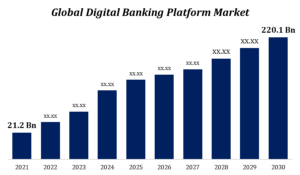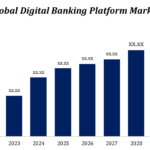Decentralized Finance (DeFi): Opportunities and Risks for Investors
Decentralized Finance, or DeFi, has emerged as one of the most transformative trends in the financial world, promising to disrupt traditional financial systems by offering an alternative that is more transparent, accessible, and decentralized. Built on blockchain technology, DeFi platforms enable users to access a wide range of financial services without the need for intermediaries like banks or brokers. However, with these opportunities come significant risks, making it essential for investors to understand both the potential and the pitfalls of this rapidly evolving space.
1. Understanding Decentralized Finance (DeFi)
DeFi refers to a broad category of financial applications that operate on decentralized blockchain networks, primarily Ethereum. These applications replicate traditional financial services such as lending, borrowing, trading, and investing but without the need for a central authority. Instead, DeFi relies on smart contracts—self-executing contracts with the terms of the agreement directly written into code.
The appeal of DeFi lies in its ability to offer financial services that are open to anyone with an internet connection, without the restrictions and fees typically imposed by traditional financial institutions. This openness and inclusivity have attracted a diverse range of users, from retail investors seeking high yields to developers experimenting with new financial models.
2. Opportunities in DeFi
a. High-Yield Investment Opportunities
One of the most attractive features of DeFi is the potential for high returns on investment. DeFi platforms often offer significantly higher interest rates than traditional savings accounts or bonds. For example, lending platforms like Aave or Compound allow users to earn interest on their digital assets, while liquidity pools on decentralized exchanges (DEXs) like Uniswap provide opportunities for yield farming, where investors earn rewards in the form of additional tokens.
b. Access to a Global Financial System
DeFi breaks down geographical barriers, providing access to financial services for individuals in regions where traditional banking infrastructure is lacking or inaccessible. This global accessibility can democratize finance, empowering users in developing countries to participate in the global economy and access credit, insurance, and investment opportunities that were previously out of reach.
c. Innovation and Flexibility
DeFi is at the forefront of financial innovation, with new products and services being developed at a rapid pace. From decentralized exchanges (DEXs) to stablecoins, synthetic assets, and flash loans, DeFi platforms offer a level of flexibility and creativity that is difficult to find in the traditional financial system. Investors who are early adopters of these innovations have the opportunity to benefit from their growth and adoption.
3. Risks in DeFi
a. Smart Contract Vulnerabilities
While smart contracts are the backbone of DeFi, they are not without risks. Bugs or vulnerabilities in the code can be exploited by hackers, leading to significant losses for investors. Unlike traditional financial systems, where there are often legal protections and insurance, DeFi operates in a largely unregulated environment, meaning that users have little recourse if something goes wrong.
b. Market Volatility
The DeFi market is highly volatile, with the value of digital assets fluctuating wildly. This volatility can result in substantial gains, but it can also lead to significant losses. Investors need to be prepared for the inherent risks of the crypto market and should only invest what they can afford to lose.
c. Regulatory Uncertainty
DeFi exists in a legal grey area, with regulators around the world still trying to determine how to approach this new financial ecosystem. There is a risk that increased regulation could stifle innovation or impose restrictions that limit the growth of DeFi platforms. Additionally, the lack of regulatory oversight means that DeFi platforms are often susceptible to fraud, scams, and market manipulation.
d. Liquidity Risks
Many DeFi projects are relatively new and may not have the same level of liquidity as traditional financial markets. This lack of liquidity can make it difficult to execute large trades or exit positions without significantly impacting the market price. Investors in DeFi should be aware of the potential for slippage and the challenges of navigating less liquid markets.
4. Best Practices for DeFi Investors
Given the opportunities and risks associated with DeFi, investors should approach this space with caution and due diligence. Here are some best practices to consider:
- Research Thoroughly: Before investing in any DeFi project, take the time to research the platform, the team behind it, and the underlying technology. Look for projects with a strong track record, transparent operations, and a clear value proposition.
- Diversify Your Portfolio: Spread your investments across multiple DeFi platforms and assets to mitigate risk. Diversification can help protect your portfolio from the volatility and uncertainties inherent in the DeFi market.
- Start Small: If you are new to DeFi, consider starting with a small investment to familiarize yourself with the platforms and the risks involved. As you gain experience and confidence, you can gradually increase your exposure.
- Stay Informed: The DeFi landscape is constantly evolving, with new projects, updates, and regulations emerging regularly. Stay informed about the latest developments and be prepared to adjust your investment strategy as needed.


































